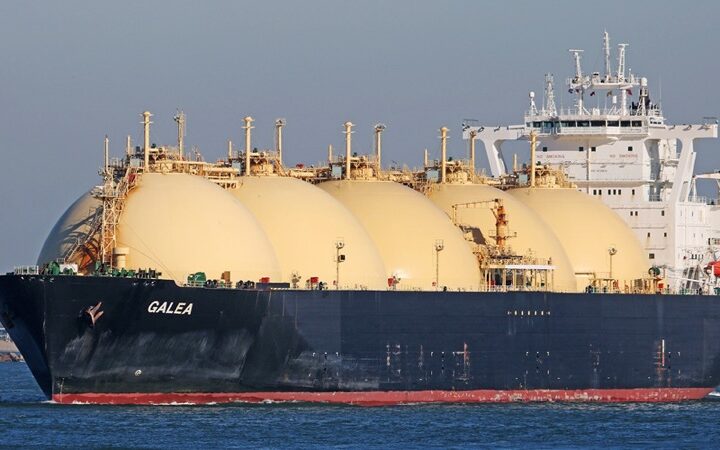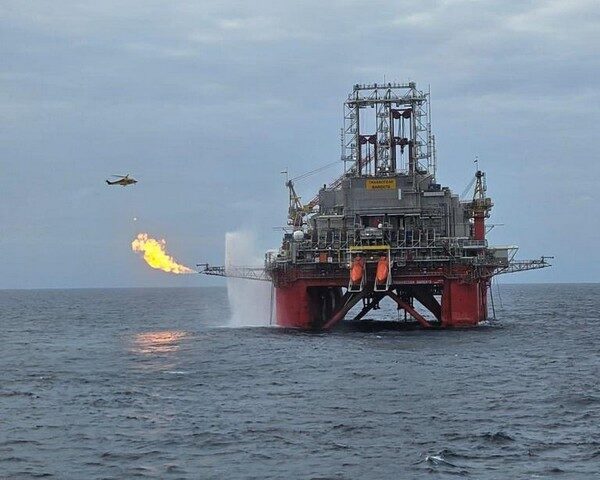.
Marcuard's Market update by GaveKal Dragonomics
By Louis Gave
Charles Gave likes to say that good money management often involves taking a few key decisions and sitting on them for a decade. In 1982, for example, the avoidance of energy and material stocks ensured almost ten years of outperformance. In 1990, avoiding Japan paid off for two decades. In 2000, sidestepping TMT and underweighting the US dollar worked for almost a decade. In 2006, avoiding financials also paid off for a decade, as did underweighting euroland. And finally, underweighting energy in the past five years has been a winner.
.png) Moreover, gains from avoiding the energy complex look to be rising as global energy stocks have underperformed the World MSCI by -15% year-to-date. In just four months, those are strikingly poor numbers, especially as the oil price has been broadly stable over the last year and producers have seen their cost of capital fall (black line in the chart). So given these factors, together with better than expected economic growth in China, Asia and Europe, what lies behind the inability of energy stocks to mount a proper rally? There are several possible explanations:
Moreover, gains from avoiding the energy complex look to be rising as global energy stocks have underperformed the World MSCI by -15% year-to-date. In just four months, those are strikingly poor numbers, especially as the oil price has been broadly stable over the last year and producers have seen their cost of capital fall (black line in the chart). So given these factors, together with better than expected economic growth in China, Asia and Europe, what lies behind the inability of energy stocks to mount a proper rally? There are several possible explanations:
1. An uncertain oil outlook. Crude prices have been stable over the past 12 months, thanks in large part to OPEC discipline. This rests on Riyadh’s need for a crude price of about $50 a barrel if Saudi Aramco is to achieve a successful initial public offering. But in the background lies the continued Sunni-Shia civil war raging across the Middle East (Syria, Yemen, Iraq), pitting Qatar and Saudi on one side, against Iran and Russia on the other. Clearly, Saudi is selling its crown jewel in order to fund its war efforts as well as sustain an expensive welfare state.
Hence, with Russia and Iran having an incentive to disrupt Saudi Aramco’s IPO, their best option is to collapse the oil price. It so happens for Russia that the onset of spring allows it to pump more oil at a lower cost. So, imagine that you are Vladimir Putin; do you (i) give a helping hand to your Saudi enemies by keeping oil in the ground, or (ii) pump as much of the stuff as you can (as you did last year, driving the oil price down quickly to $40/bbl) while the days are warm, allowing financial pressure to be piled on Saudi Arabia?
2. Uncertainty around China. The big surprise of 2016 was that, instead of imploding, China’s economy re-accelerated. Perhaps the clearest sign that growth was defying expectations came in 1Q16 when energy imports rose 24% YoY. This offered a clear sign that Beijing’s looser monetary and fiscal policies were gaining traction. Yet fast forward to today and the China-triggered reflation trade for commodities is ebbing. Iron-ore and steel prices have fallen back due to China’s tighter monetary and regulatory policies, and it is unlikely that the coming months will see double digit growth in energy imports. If anything, the mild tightening of monetary policy could see excess inventories come back onto the market.
3. Energy is no longer the growth sector it once was. Every structural bull market needs a good story, and for energy the tale that gets told every generation or so is that King Hubbert’s peak will soon be hit. The call goes out that the world will soon run out of oil. This “peak oil” theory gets debunked in each cycle, but when prices are moving up on temporary supply constraints, it remains a compelling yarn. In such periods, energy stocks are “growth” plays that attract investors seeking outsized returns.
.png) However, it is this flood of capital which triggers the next discoveries, whether in production, distribution or user conservation. Of course, these new efficiencies render “peak oil” worries obsolete for the next generation. This much was clear by around 2012 as US production, in particular, was shooting up rather than contracting. And so the market moves from a belief in “peak oil” to a belief in “peak demand”, which then triggers a de-rating of energy stocks.
However, it is this flood of capital which triggers the next discoveries, whether in production, distribution or user conservation. Of course, these new efficiencies render “peak oil” worries obsolete for the next generation. This much was clear by around 2012 as US production, in particular, was shooting up rather than contracting. And so the market moves from a belief in “peak oil” to a belief in “peak demand”, which then triggers a de-rating of energy stocks.
4. Capex will likely continue to be a drag on results. Energy is a capital-intensive business which sees huge wear-and-tear on equipment that typically must be run in inhospitable environments. This capital intensity is not an issue when the sector is perceived as being a growth industry, with investors fighting to provide capital to various projects. However, when the sector de-rates, access to cheap capital is no longer guaranteed, even in an environment of low interest rates. And so companies are stuck with the quandary of reducing capital spending, and possibly becoming irrelevant; or continuing to invest, but possibly doing so at a loss.
Putting it all together, energy stocks’ inability to ride the “French election” reflation trade alongside emerging market currencies, global financials and global equities, is not that surprising. Indeed, it will take a chunky rise in oil prices for investors’ perception of energy stocks to change. Yet with oil output set to make new highs in the US and Russia being likely to crank up output in order to stick it to Saudi Arabia, the oil market is more likely to face continued downward price pressure (a major war in Asia notwithstanding). As such, we find it hard to get excited about trying to catch the falling knife of energy stocks.







